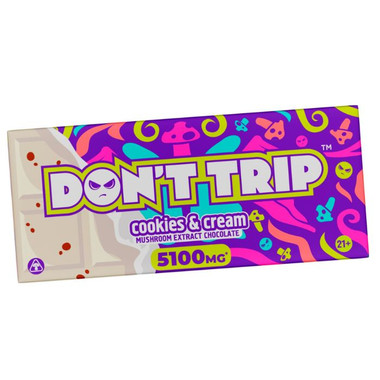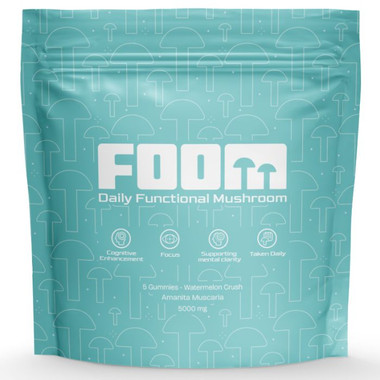How To Measure Customer Experience For Vape Shops
Estimated 0 min read
Knowing how customers feel about your vape shop is essential for success. Getting a feel for and understanding the moods and emotions of customers and the pain points they experience when shopping in your eCommerce vape store are essential things to know to improve. That’s why on today’s blog, we talk about customer experience, how to measure it and how to improve it.
Table of Contents
- What Is Customer Experience And Why Is It So Important For Your Vape Shop?
- Measuring Customer Experience (surveys, website analytics)
- Customer Satisfaction Score (CSAT)
- Customer Journey Metrics (churn rate, average resolution rate, first contact resolution FCR)
- Implement Scorecards
- Net Promoter Score (NPS)
- Customer Effort Score (CES)
- Conclusion
What is Customer Experience and Why Is It So Important For Your Vape Shop?
Customer experience is the experience your customer has after interacting with your vape shop or eCommerce website. From the very beginning of the customer buying journey to the very end, every perception they make of you, and your vape shop along the way amounts to the customer experience.
Customer experience is essential today, especially in eCommerce, where customers have access to multiple vape shops. They are looking for cost-effective prices and a seamless and frictionless customer experience. That’s why it is so important because, with a great customer experience, you encourage customer loyalty and grow your customer base and help spread the word about your vape shop and your brand.
Measuring Customer Experience
There are many ways in which customer experience can be measured, but here are three of the most important ones you can use to measure customer experience in your vape shop.
Conduct Surveys
The easiest to implement since most customer relationship management software comes with survey features. Alternatively, you can also create a survey on your email software, Google Forms, or use a website like Survey Monkey.
You should set up your surveys at essential points during the customer’s journey. After a sale, after a customer support interaction, and maybe after they have signed up to your email list and a couple of months have gone by, these are all ideal points where a survey can be used, but it will largely depend on the metric you plan to use.
Website Analytics
Your eCommerce platform or Google Analytics can be a treasure trove of information regarding figuring out what’s working and what’s not. For example, you can see the pages performing well, where customers are dropping off the site, and check how customers use your site.
Customer satisfaction score (CSAT)
One of the first metrics you must consider when measuring customer experience is the customer satisfaction score (CSAT). This type of survey measures satisfaction with a product, brand, or service. In essence, it measures customer retention since it allows the customer to score with obvious questions about what he found most satisfactory with the vape shop.
With a CSAT survey, customers are asked to rate their satisfaction with the vape shop or eCommerce vape shop on a metric that ranges from one to five or even more (for example, one to ten). The set range could be as follows:
How would you rate your overall satisfaction with customer service?
- Very Unsatisfied
- Unsatisfied
- Neutral
- Satisfied
- Very Satisfied
To calculate the CSAT, all you have to do is divide the number of satisfied responses by the number of survey responses and multiply it by 100. So the customer satisfaction score is the average number of satisfied responses that will tell you the number of customers that will continue to do business with your vape shop. The higher the score, the better.
Customer Journey Metrics
Other metrics to consider that can help you understand where the customers are dropping off your website or other parts of the customer journey include churn rate, average resolution rate, and first contact resolution FCR.
Churn Rate
Customer churn rate is how many customers are lost during a specific period. This metric is important because it shows you how many customers stop buying from your vape shop. To calculate it, all you have to do is subtract customers from the start of a timeframe to the end of a time and divide the result by the customers.
Average Resolution Rate
This is an essential metric for customer service. It breaks down the time that it took for a customer agent to resolve a client’s inquiry. A shorter resolution time equals a higher satisfaction rate. To calculate this metric, you have to add all the times to resolution then divide this number by the total number of resolved requests.
First Contact Resolution
Another important metric is that customers are usually more satisfied when their issue is resolved the first time it’s brought up, meaning in the initial first call or contact with customer service. It is calculated by dividing the total number of resolved cases on the first attempt by the total number of instances created.
Implement Scorecards
Another effective way to measure the customer experience is by implementing customer service scorecards filled out by your customer service team. These scorecards should record some of the metrics talked about above, like average resolution rate and first contact resolution, but should also measure friendliness and tact.
To measure friendliness and tact, you could ask your agents to rate themselves with the scorecards and later measure and compare these responses to survey questions sent to customers after the interaction with the customer agent.
By creating these types of scorecards, you'll allow the agents to see for themselves how they are performing, and you can also gauge how well they can recognize customers' emotions and moods, among other things.
Depending on how your customer service department fills out the scorecards, you can set up a metric of the “ideal” customer service experience and use this as a standard number that lets you know your customer service agents are leaving customers happy.
Net Promoter Score (NPS)
Perhaps one of the most critical metrics for measuring customer experience is the Net Promoter Score or NPS. By measuring NPS, you can predict if your customers will become regular buyers or not. It can also help you in identifying which of your customers will become ambassadors of your vape shop.
In essence, the net promoter score or NPS is the number of customers willing to recommend a product, service, or vape shop to someone else. This is an essential metric in customer experience because it tells how satisfied your customers are with the current customer experience and how loyal they are to the business.
Calculating Net Promoter Score
To calculate the net promoter score, all you need to do is create a survey that has a set range from zero to ten that asks: “How likely are you to recommend this vape shop to a friend, relative, or co-worker?”
This set range of zero to ten is divided into promoters, passives, and detractors. These are considered detractors from zero to six, from seven to eight, are considered passives, and from nine to ten, these are considered promoters.
So, to calculate the Net Promoter Score, all you’ll have to do is subtract the number of responses that fall into the promoters category by the total number of responses that fall into the detractors' category. The subtraction will be the net promoter score.
Customer Effort Score (CES)
As mentioned before, customers are not only looking for lower prices online, they are also looking for frictionless customer experiences. One metric that can measure how easy it is for customers to go through the customer journey is the customer effort score or CES.
Essentially it measures how easy it was for customers to complete an individual action, for example, from buying an e-liquid to finding it in your website, all these are considered actions that the customer must make.
Calculating Customer Effort Score
To calculate CES, all you need to do is create a survey that asks simple statements. For example, a good statement for customer effort score would be:
“The vape shop made it easy for me to find the vape juice I was looking for.”
You will then want to create a set range of one to seven, with one meaning “disagree” and seven meaning “agree.”
After you have collected the responses to calculate the customer effort score, all you have to do is divide the total number of responses by the total number of customers who participated in the survey. The higher the score, the easier it was for the customer to complete a specific action.
For greater insight, you can always add comment boxes where customers can explain why they chose the answers they select, where they could potentially describe the actual obstacles they found when acting.
Conclusion
Combining all of these metrics can get a better picture of how to measure customer experience. With these metrics, you’ll get a sense of how satisfied your customers are, where they are dropping off your website, and what obstacles are getting in the way of customers. In the end, we hope that by blending these metrics, you can improve your customer experience and make a more frictionless customer journey.










